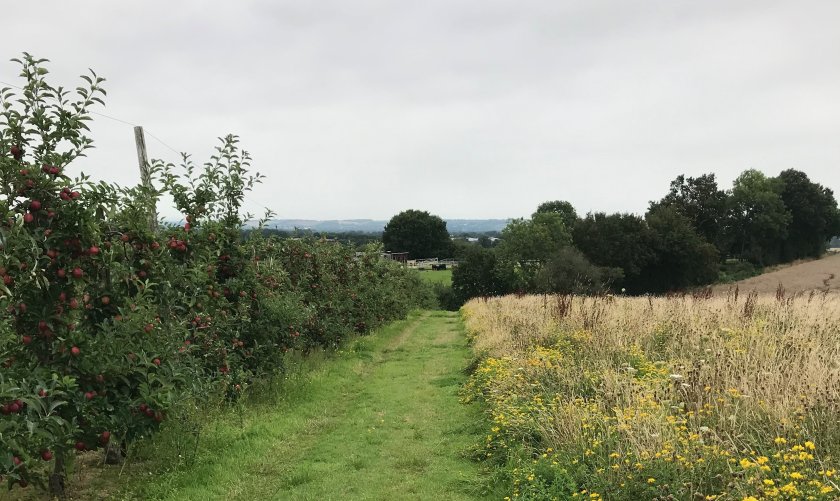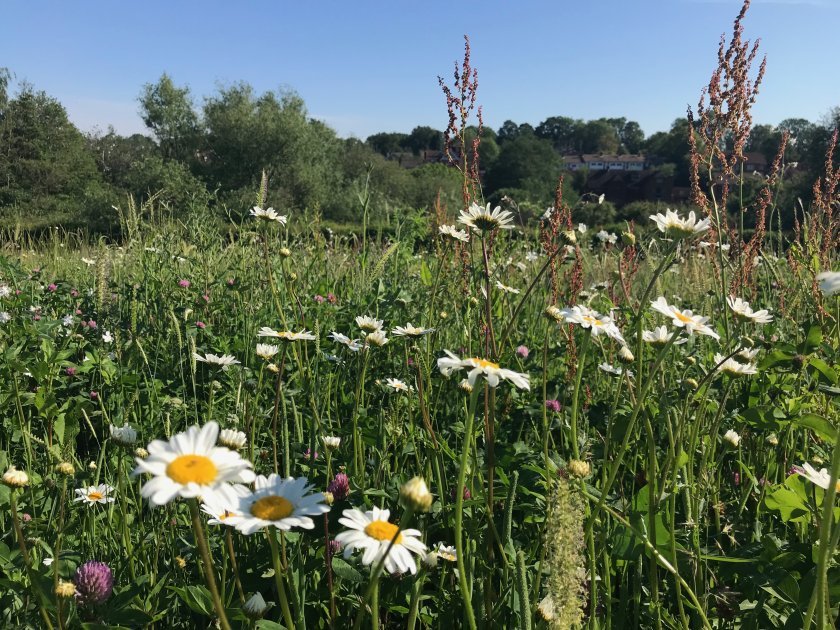
Wildflower strips planted around apple orchards could help farmers harvest an additional 2,400kg per hectare, researchers say.
Insects including hoverflies, lacewings and ladybirds play an important role in keeping Britain’s apple crop healthy, a new study has shown.
Wildflower strips planted around apple orchards provide a habitat for predatory insects that prey on pests that deform and damage apples.
Flower margins were established next to five dessert apple orchards in the UK, with researchers from the University of Reading finding that only 48% of trees had fruit damage compared to 80% in orchards without flowers.
In 2020, 200,000 tonnes of dessert apples worth £158 million were produced in the country.
The two-year study, published today (28 February), suggests farmers could harvest up to an additional 2,420kg per hectare (6.9%) of undamaged apples by installing flower margins on orchards.
The study utilised large, mature wildflower margins more than five meters wide and included grasses and flowers chosen to supply year-round food sources.

The long-established nature of the margins gave time for diverse communities of predatory insects to build up.
Lead author Charlotte Howard said: "Planting flower margins near fruit trees is a sustainable way of preventing damage to crops as it reduces reliance on insecticides.
"We will get more good bugs on farms and better British food in supermarkets as more flower strips are added next to orchards.”
The research team found that flower margins reduced not only the spread of aphids on trees, but also how many fruits were attacked on infested trees.
Apples near flower borders had over a third less chance of fruit damage even during peak aphid outbreaks.
Significant reductions in damaged crop extended up to 50 meters into orchards from the floral habitat, according to the study.
Researchers say that simple conservation measures like dedicating orchard edge habitat for wildflowers could reduce reliance on pesticide sprays over the long term.
The research team, led by the University of Reading, included NIAB East Malling, Cranfield University and Syngenta.
Flower margins were established on farms by Avalon Produce, Worldwide Fruit and the UK Centre for Ecology and Hydrology.
